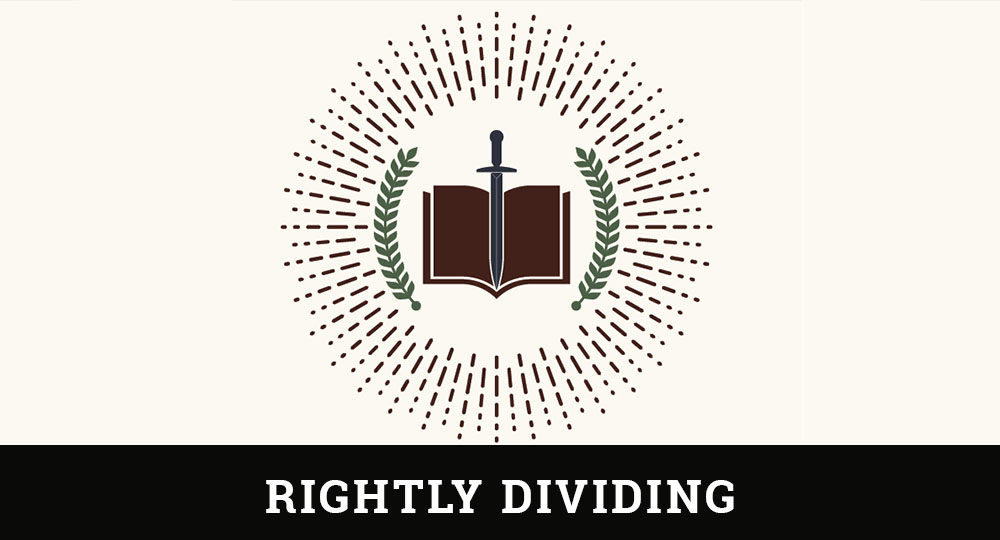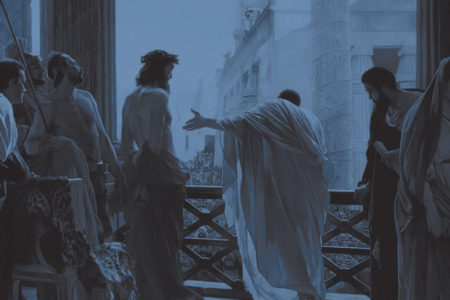Introduction to the First Epistle to the Thessalonians
1 Thessalonians 1:1
First Thessalonians is a key book for every Christian, whether a new believer or seasoned saint. The theme is the coming of the Lord, and each chapter builds on an aspect of the believer’s life in light of it, tackling such vital subjects as perseverance through suffering; election; the Rapture; and much, much more.
The apostle Paul established the church in Thessalonica on his second missionary journey (see “The Thessalonian Church” in the March/April 2016 issue). But Christian persecution led believers to persuade Paul and his coworker Silas to leave the city in the darkness of night.
Unable to return and disciple the fledgling church, Paul sent Timothy to Thessalonica in his place. Timothy’s report greatly encouraged the apostle, relieving his anxiety over the church’s spiritual condition.
Specifics on the Letter
Although some Bible translations read, “The First Epistle of Paul the Apostle to the Thessalonians,” this title was not part of the original text. It was added, not by the author, but by someone else to designate the author and destination of the document. Such titles were added to all the Pauline Epistles to identify them from other manuscripts. That said, most scholars agree Paul wrote 1 Thessalonians.
Paul mentioned Silvanus and Timothy in verse 1 because they were instrumental in establishing the church. Some scholars rejected Paul’s authorship, but most today reject their arguments. Early church leaders, such as Irenaeus, Ignatius, and Polycarp, accepted Paul as the author.
After leaving Thessalonica, Paul traveled to Berea (Acts 17:10–15) and Athens (vv. 16–34), finally arriving in Corinth where he ministered for 18 months (18:1–11). Most scholars believe Paul wrote 1 Thessalonians while in Corinth during his second missionary journey.
Although no date is given for the letter, certain historical events in Corinth make it possible to approximate. It was written when Gallio was proconsul in Corinth for one year (v. 12). Paul probably arrived in late AD 50 and composed the epistle in 51 or early in 52, which was early in his ministry.
Unable to return to Thessalonica and instruct the young church, Paul did the next best thing: He dictated an extremely personal letter. He wrote to express his joy over hearing the Thessalonian believers were steadfast in their commitment and faithfulness to Christ and had shown a determination to stand against opposition and persecution. Paul was overjoyed to know of their resolve to live godly lives, walk by faith, and serve the Lord as they awaited His return.
It also was necessary that Paul discredit the malicious reports being circulated against him, his teaching on the Messiah, and his mission ministry. Aggressive Jewish opposition was aimed at turning the devotion of new believers away from Paul and his message. The persecutors would spread the lie that missionaries like Paul were only interested in money. Paul countered this charge in 1 Thessalonians 2. They also claimed he fled Thessalonica immediately when opposition to his teaching arose, leaving his converts to face the consequences.
If these charges went unanswered, the faith of the new believers might have been destroyed, ruining Paul’s missionary work in this area of Macedonia. Paul hoped his epistle would give direction and hope to the young church and help it remain steadfast and faithful to Christ. Sending Timothy back to disciple the Thessalonians demonstrated Paul’s concern for their spiritual well-being (1 Th. 2:17—3:5).
The New Testament, remember, was not penned yet; and Paul’s stay in Thessalonica was too brief for him to establish the believers in the true doctrines of the faith. Thus many misunderstandings and misinterpretations were starting to emerge within the church, and Paul knew from experience that doctrinal errors needed to be corrected immediately.
A personal letter from Paul was definitely in order and timely. He knew his praise for their commitment would encourage the Thessalonians and be greatly appreciated.
Synopsis of the Letter
This is an extremely important book. It addresses major themes, such as salvation of the individual, service for the Lord, sanctification of believers as they are conformed to Christ, surety of the believer’s resurrection, and security of all believers in Christ in relation to the Day of the Lord and God’s wrath.
Within these subheads, the epistle teaches on perseverance through suffering, election, living a pure life in an unsaved world, the Rapture of the church, the coming of Antichrist, apostasy, the wrath of God on an unsaved world, edification of Christian brothers and sisters, obedience to church leaders, disciplining the unruly, supporting and encouraging the weak, thankfulness, being yielded to the Holy Spirit, the importance of prayer, and Christ’s Second Coming.
Salutation of the Letter
The letter begins, “Paul, Silvanus, and Timothy, to the church of the Thessalonians in God the Father and the Lord Jesus Christ: Grace to you and peace from God our Father and the Lord Jesus Christ” (1 Th. 1:1).
This was a standard salutation in Paul’s day. It was customary to start with the author’s name, followed by the addressees and a general greeting.
The three men mentioned in the salutation helped establish the Thessalonian church, and their names would immediately have grabbed the readers’ attention. Having Paul’s name appear first would especially peak their interest because he was their spiritual father. The three men indicated they were together in Corinth at the time this letter was written (Acts 18:5).
The word we, used throughout the epistle, is a strong endorsement that Silas and Timothy helped Paul immensely in the work of this church. They, too, could attest to the truth of what Paul wrote in 1 and 2 Thessalonians because they were eyewitnesses of his ministry.
Paul always called his coworker “Silvanus” (proper Roman name), not “Silas,” as Luke did in the book of Acts. Silvanus is mentioned second because he was chosen by Paul to accompany the apostle on his second missionary journey (Acts 15:40). A Jewish man with a Roman name, Silvanus was a Roman citizen (16:37) and a member of the Jerusalem church. The apostles and elders, with the entire church, chose him to accompany Paul to Antioch (15:22).
Silvanus agreed with Paul during the Jerusalem council that Gentile believers should have liberty to practice their faith without being encumbered by Jewish traditions of circumcision and keeping the Mosaic Law (v. 24). Silvanus was also called a “prophet” (v. 32). After he left Paul at Corinth, nothing more is heard from him in Acts or Paul’s epistles. It was proper to name Silvanus second in the salutation because he was Paul’s senior worker.
It was also appropriate for Paul to mention Timothy because he worked closely with the Thessalonian church. Although he was not with Paul and Silvanus when they planted the church, Paul sent Timothy there soon after (1 Th. 3:1–2, 6). Timothy had a Jewish mother and a Greek father and was reared in a pagan community (Acts 16:1). He was Paul’s son in the faith and was personally discipled by him. He is mentioned in the salutation of four other Pauline Epistles: 2 Corinthians, Philippians, Colossians, and Philemon.
Interestingly, Paul never referred to himself as an apostle in this epistle, as he did on other occasions. He spoke to the Thessalonian Christians on a personal level since he was their spiritual father, and his character and conduct convinced them they should follow his instruction and teachings.
Paul addressed the “Church of the Thessalonians.” The word church (Greek, ekklesia) is made up of two Greek words: ek (out of) and kaleo (to call). It was used in Greek culture for any group or assembly of people and did not have a religious connotation. In Scripture, the word church refers to a Christian assembly of people who believe in Jesus Christ. It never refers to a building. Throughout this epistle, the word refers only to a local assembly, not the universal church.
The phrase in God the Father and the Lord Jesus Christ (1 Th. 1:1) clarifies whom Paul, Silvanus, and Timothy worshiped and distinguishes the church from association with pagan religions or a political group of that day. Mentioning “the Lord Jesus Christ” identifies the church as Christian, and not Jewish in beliefs.
The makeup of this group was twofold: Many were Gentiles who became believers, and a few were Jewish people like Jason (see Acts 17). Salvation in Christ gave Gentiles and Jews equal social standing and a new relationship in life, love, and communion with one another—something no other religion in the world could do.
Paul’s greeting, “Grace to you and peace,” was common (1 Th. 1:1). But under the inspiration of God, the words grace and peace became invested with new meaning. They expressed the truth of the gospel.
Grace can be defined as an attribute of God, a part of His character, which He expresses through His goodness to undeserving, sinful humanity.
Peace enters our lives when we are born again and yield to the control of the Holy Spirit, who gives us a calmness of spirit and sense of well-being because we have been reconciled to God through Jesus Christ.
The next article will begin an exciting, in depth, verse-by-verse study of this key epistle, which spoke to first-century believers in Thessalonica and still speaks to us today.









Love this explanation of Thessalonians